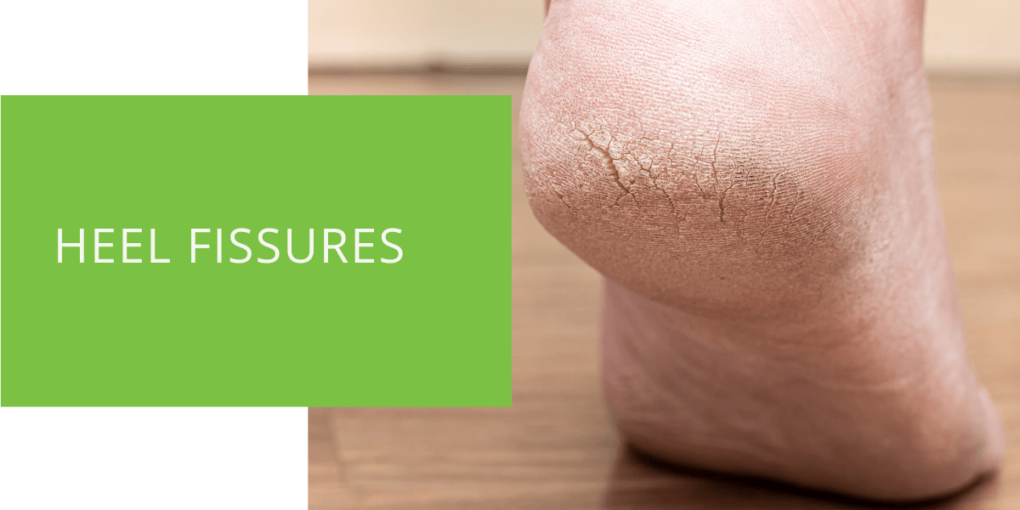Understanding and Treating Heel Fissures
Heel fissures, also known as cracked heels, are a common foot problem that can cause pain, discomfort, and embarrassment. They occur when the skin on the heel becomes dry and brittle, leading to cracks and fissures on the surface. If left untreated, heel fissures can lead to further problems and be difficult to heal.
This article will take a closer look at heel fissures, including their causes, symptoms, and treatment options. We'll also discuss ways to prevent heel fissures and when to see a podiatrist for more specialized treatment. By understanding and addressing heel fissures, you can keep your feet healthy and avoid the discomfort and embarrassment that can come with this common foot problem.
What Are Heel Fissures?
Heel fissures are cracks in the skin of the heel that can range in depth and severity. They are caused by dry, rough skin that becomes brittle and prone to cracking. Heel fissures can be painful and lead to further problems if left untreated.
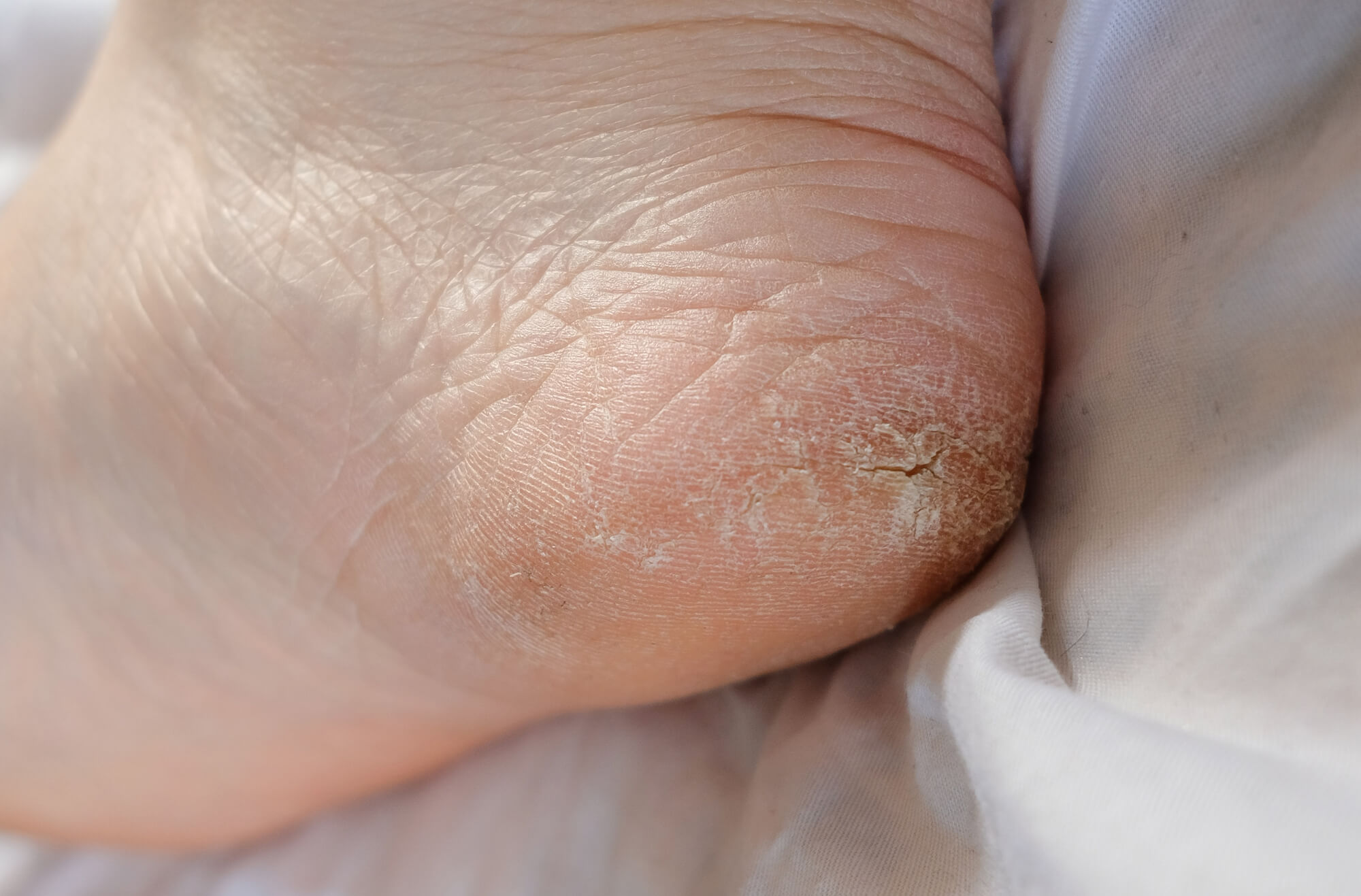
Causes
Several factors can contribute to the development of heel fissures. Some of the most common causes include:
- Dry skin: When the skin on the heels becomes dry, it can become more prone to cracking. This can be caused by a lack of moisture in the air, using harsh soaps, or not moisturizing the skin enough.
- Calluses: Calluses are thick, rough patches of skin that can form on the heels due to pressure or friction. If not properly treated, calluses can lead to heel fissures.
- Diabetes: People with diabetes are more prone to developing heel fissures because of decreased circulation and nerve damage in the feet.
- Poorly fitting shoes: Wearing shoes that do not fit properly or provide enough support can lead to heel fissures.
Symptoms
The most obvious symptom of heel fissures is the presence of cracks or fissures on the skin of the heels. These cracks can be shallow or deep, and they may be accompanied by other symptoms such as:
- Pain: Heel fissures can be painful, especially when the cracks are deep. Walking or standing for long periods can be especially uncomfortable.
- Bleeding: Deep heel fissures can sometimes bleed, especially if the skin around them is dry and cracked.
- Dryness: The skin on the heels may feel dry and rough and may be prone to flaking or peeling.
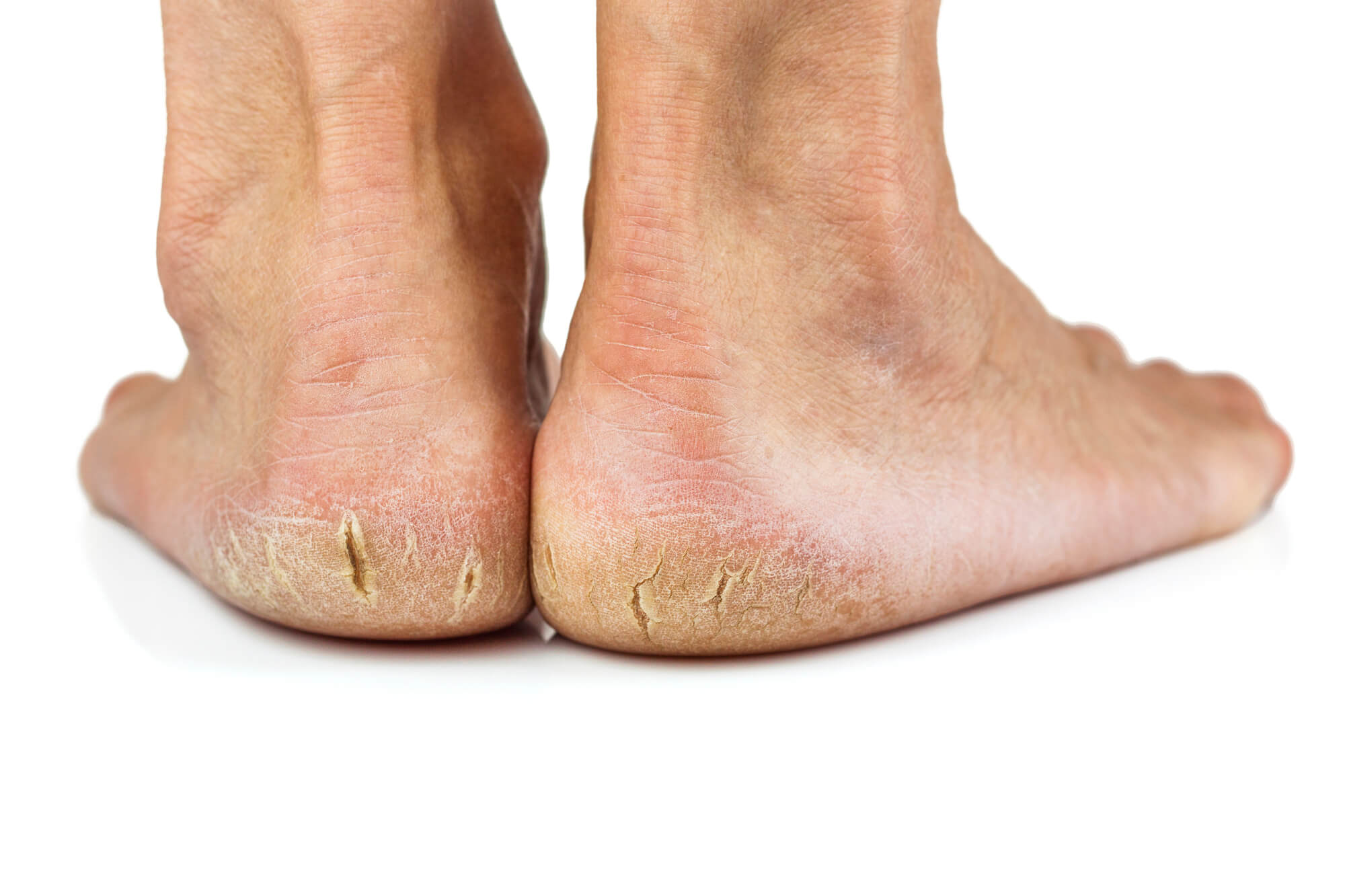
How to Treat Heel Fissures
If you have heel fissures, it's important to start treating them as soon as possible to prevent them from worsening. There are several options for treating heel fissures, including both at-home remedies and medical treatments.
At-Home Remedies
You can do several things at home to help treat heel fissures. Some of the most effective at-home remedies include:
- Moisturize: One of the most important things you can do to treat heel fissures is to keep your skin moisturized. This will help to prevent the skin from becoming dry and brittle, which can lead to cracking. There are many different moisturizers that you can use, including creams, lotions, and ointments. Some of the best moisturizers for heel fissures contain urea, which helps to soften and exfoliate dead skin.
- Use a pumice stone: A pumice stone can gently exfoliate the skin on the heels, helping to remove dry, dead skin and prevent further cracking. To use a pumice stone, soak your feet in warm water for a few minutes to soften the skin, then gently rub the stone over the heels in a circular motion. Be careful not to apply too much pressure, which can irritate the skin.
- Apply petroleum jelly: Petroleum jelly is an effective moisturizer that can help prevent the skin on the heels from becoming dry and cracking. Simply apply a thin layer of petroleum jelly to the heels before bed, and cover your feet with socks to help lock in the moisture.
- Wear shoes that fit properly: Wearing shoes that fit properly and provide adequate support can help to prevent heel fissures. Avoid wearing shoes that are too tight or loose, and opt for shoes with a wide toe box to allow your toes plenty of room to move.
Medical treatments
If at-home remedies are ineffective in treating your heel fissures, or if the cracks are deep and painful, you may need to see a podiatrist for further treatment. A podiatrist is a medical professional who specializes in treating foot and ankle problems. Some of the treatments a podiatrist may recommend for heel fissures include:
- Medicated creams: Your podiatrist may prescribe a medicated cream to help treat your heel fissures. These creams may contain ingredients such as urea or salicylic acid, which can help to soften and exfoliate dead skin.
- Orthotics: Orthotics are special inserts that can be placed in your shoes to help provide extra support and cushioning for your heels. They can help to alleviate pressure on the heels and prevent further cracking.
- Debridement: In some cases, your podiatrist may need to remove excess dead skin from the heels using a process called debridement. This can be done using a scalpel or other specialized tools.
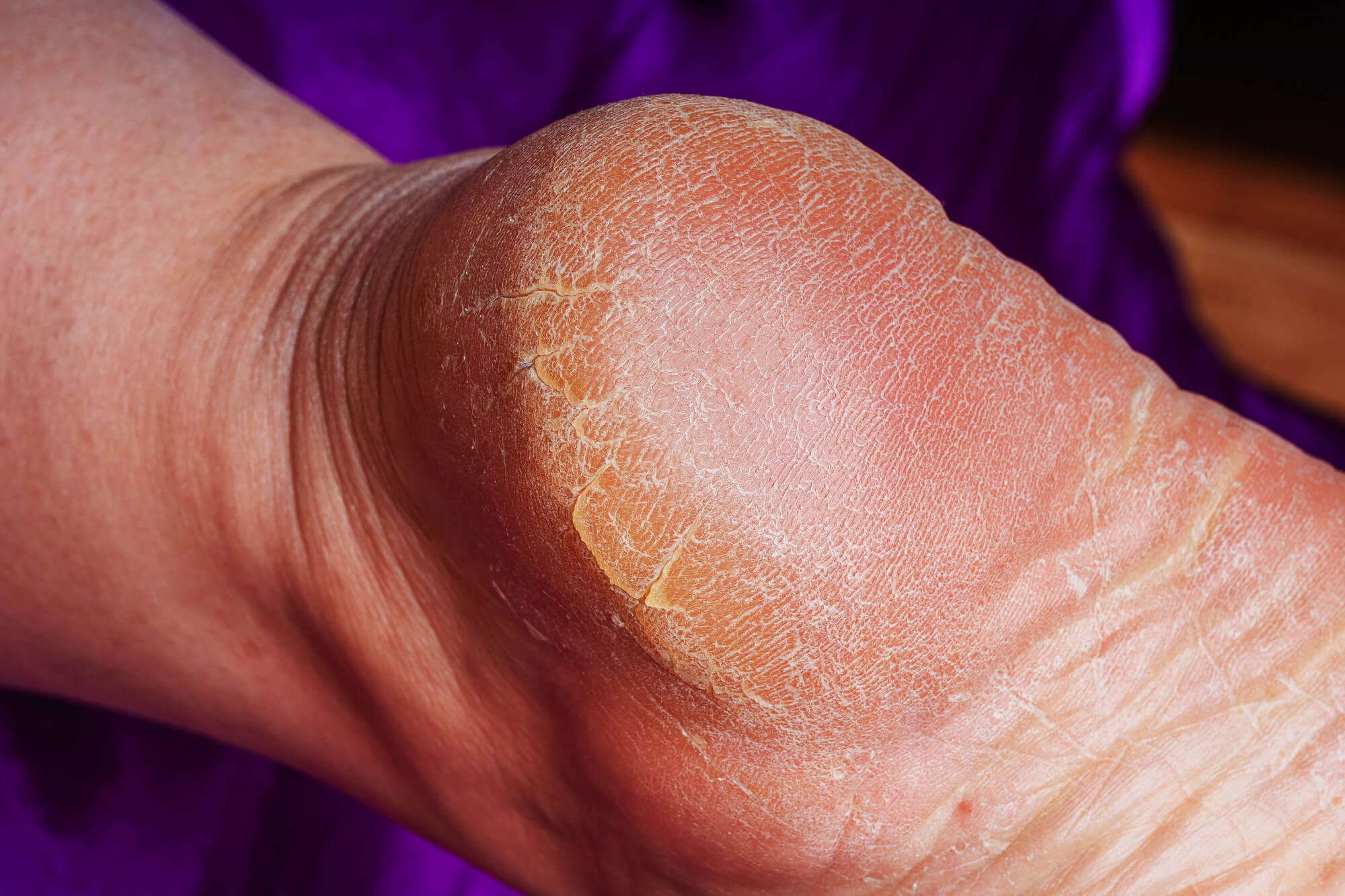
Preventing Heel Fissures
In addition to treating heel fissures, it's also important to take steps to prevent them from occurring in the first place. Some of the best ways to prevent heel fissures include:
Tips for Healthy Feet
- Moisturize regularly: As mentioned above, keeping the skin on your feet moisturized is one of the most important things you can do to prevent heel fissures. Aim to moisturize your feet at least once a day, using a cream or lotion specifically formulated for the feet.
- Wear socks: Wearing socks can help to protect your feet from dryness and cracking. Choose socks made from moisture-wicking materials, and avoid wearing socks that are too tight or loose.
- Soak your feet: Soaking your feet in warm water can help to soften the skin and make it more resistant to cracking. Add Epsom salt or another foot soak to the water to help exfoliate and moisturize the skin.
Choosing the Right Shoes
Wearing the right shoes can also help to prevent heel fissures. When shopping for shoes, consider the following:
- Fit: Make sure that the shoes you choose fit properly and provide adequate support. Avoid shoes that are too tight or too loose, and opt for shoes that have a wide toe box to allow your toes plenty of room to move.
- Material: Choose shoes made from breathable materials, such as leather or canvas, to help prevent the feet from becoming too hot and sweaty. Avoid shoes made from synthetic materials, as these can trap moisture and lead to dry, cracked skin.
- Heel height: If prone to heel fissures, it's a good idea to avoid shoes with high heels. These can put extra pressure on the heels and increase your risk of cracking. Instead, opt for shoes with a low or moderate heel height.
- Sandals: If you're planning to wear sandals, choose a pair that provides good support and fits properly. Avoid sandals with thin straps or no support, as these can increase your risk of heel fissures.
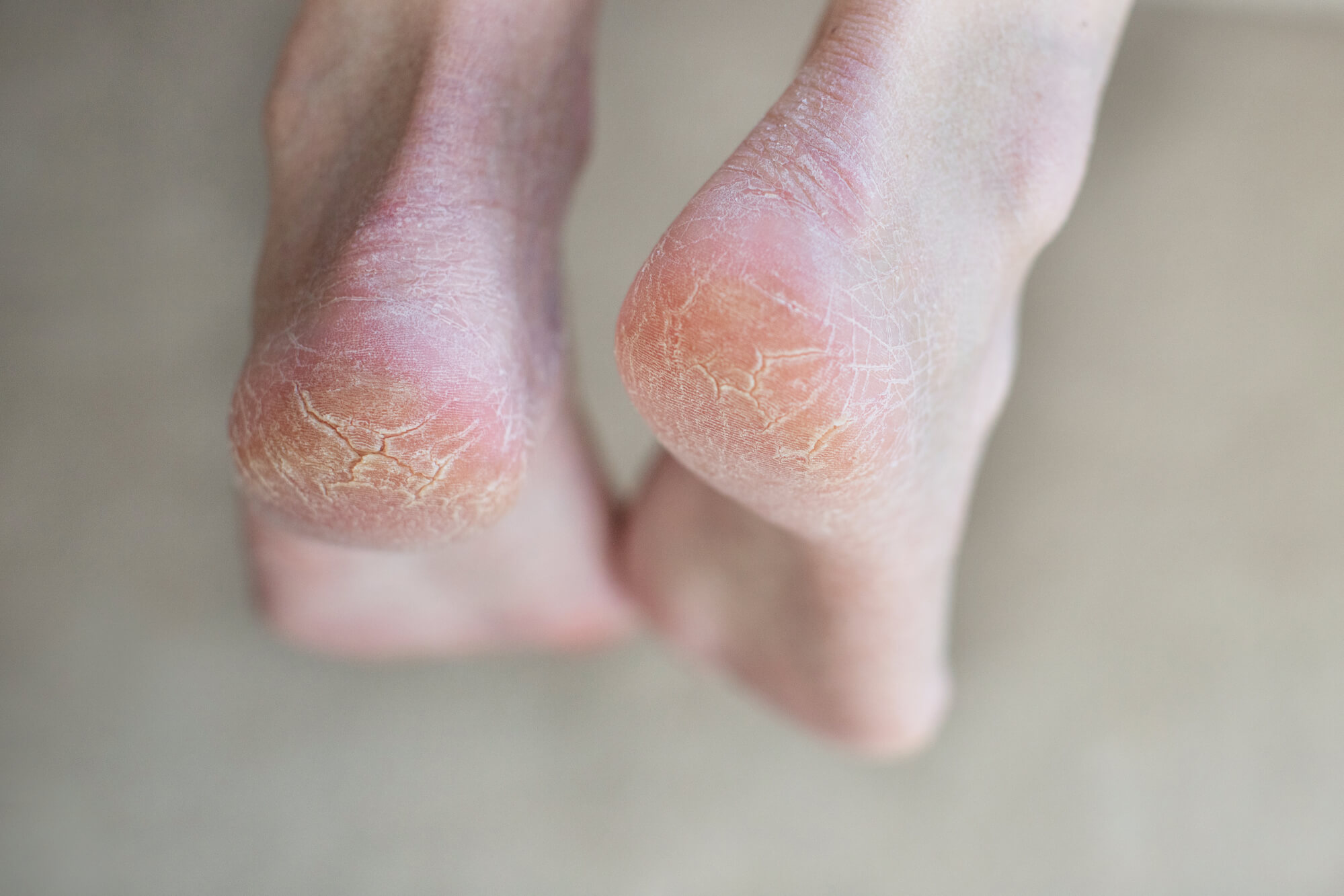
When to See a Doctor
In most cases, heel fissures can be treated at home using over-the-counter moisturizers and other remedies. However, there are times when it's necessary to see a podiatrist for more specialized treatment. If you have the following symptoms, you should consider making an appointment with a podiatrist:
When to Seek Medical Attention
- Deep, painful cracks: If your heel fissures are deep and painful, it's a good idea to see a podiatrist for further treatment. A podiatrist can help to remove excess dead skin and provide you with specialized creams or other treatments to help heal the cracks.
- Signs of infection: If you notice any signs of infection, such as redness, swelling, or pus, you should see a podiatrist right away. An infection can spread quickly and may require antibiotics or other medications to treat.
- Diabetes: If you have diabetes, it's important to see a podiatrist regularly to help prevent and treat foot problems such as heel fissures. A podiatrist can help to manage your diabetes and keep your feet healthy.
Conclusion
Heel fissures can be a painful and embarrassing problem, but with the right treatment and prevention measures, you can keep your heels healthy and crack-free. By moisturizing regularly, wearing shoes that fit properly, and seeking medical attention when necessary, you can help to prevent heel fissures and maintain healthy feet.

